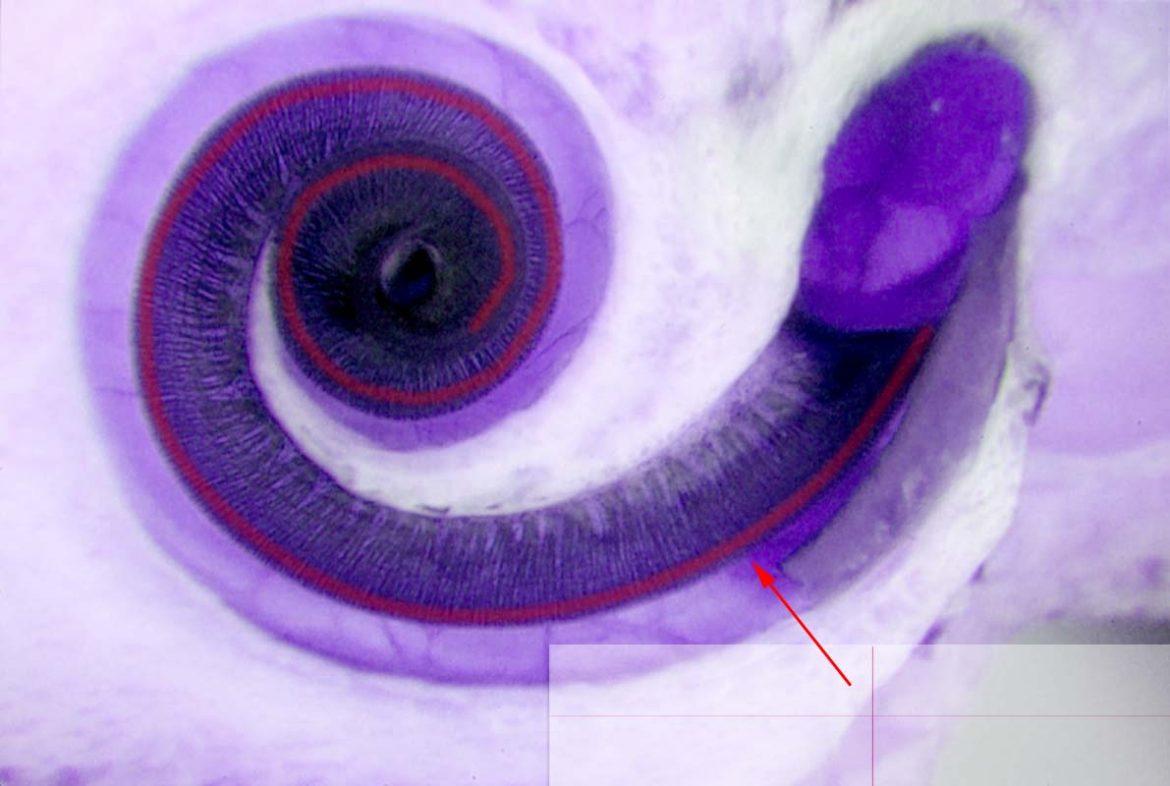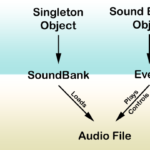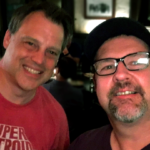So you are putting together your latest sound design project. Everything is coming together and you are just about ready to call your final mix done. And then you hear it: A click somewhere in the middle that destroys everything. You open up the wave file in your sound editor, and sure enough, there is a small sharp discontinuity in the signal. Sometimes you really have to zoom in to see it. Why is something so visually insignificant so easy to hear?
It Starts In Your Ear
To understand why a tiny discontinuity in a wave form is a huge problem for a sound, you have to first understand how your ear hears frequencies. If you could unroll your cochlea, what you would essentially see is a tube getting narrower and narrower the further you get from the outer ear. There are tiny hairs along the wall of the cochlea that are connected to neurons. Those neurons fire when the instantaneous sound energy reaches a certain intensity at the location of the hair. The width of the cochlea at the site of the hair basically creates a resonant chamber that amplifies sounds that are a multiple of the wavelength of the cochlea. Your cochlea is basically breaking up the sound that goes into your ear into tens of thousands of comb-filtered frequency buckets. But that’s only half the story.
And Then it Goes Deeper…
Somewhere between the cochlea and your perception, there is a bit of a filtering process. Some sonic information is stripped out before it makes it to what humans “hear”. These effects are known a temporal masking, and frequency masking. In temporal masking, when two similar frequencies are present at close to the same time, the louder signal can mask our ability to hear the quieter one. With frequency masking, the louder of two similar frequencies sounding at the same time tends to mask the quieter one.
A Pop is A Wad of Wrong Frequencies at the Wrong Time.
So you are probably starting to suspect, based on the masking principles I just described, that the frequency content of a pop has something to do with its ability to be heard. So what is the frequency content of a pop? You can actually prove this for yourself in your favorite audio editor:
And what you should see is a full spectrum of sound energy across all frequencies. So take just about any sustaining sound, and put a pop in it, and in multiple places between the harmonics of the original sound, there will be wide open spaces where frequencies of the pop will make if through your filtering process and into your perception.
And that’s why you can almost always hear a tiny discontinuity in your audio signal.




